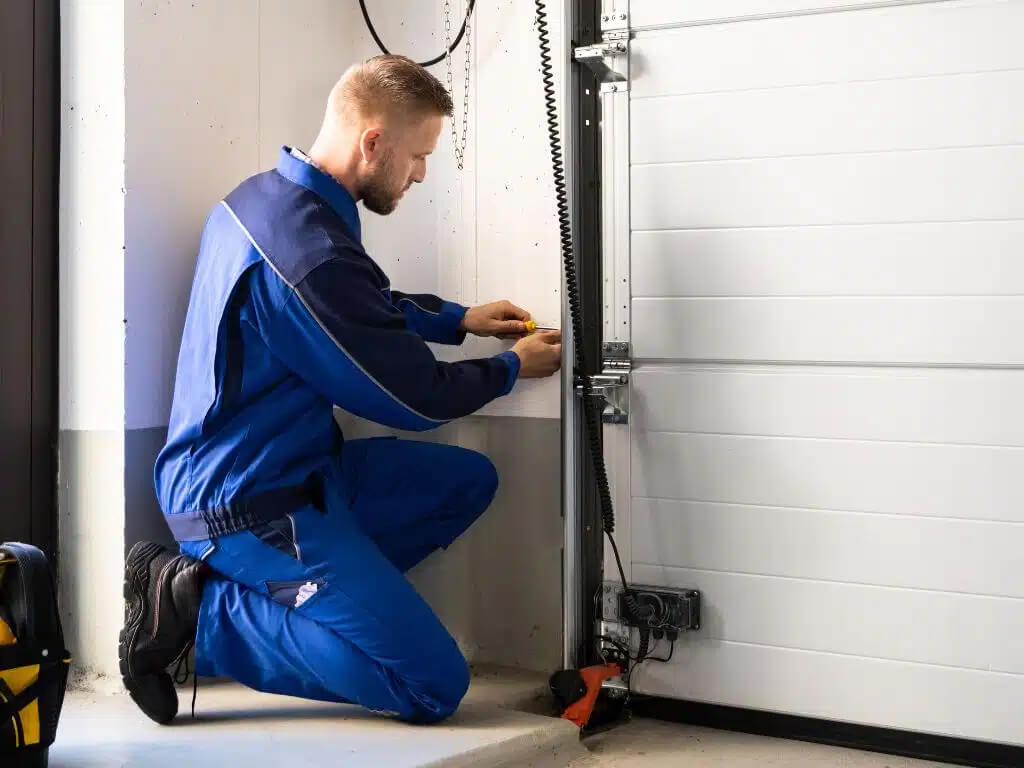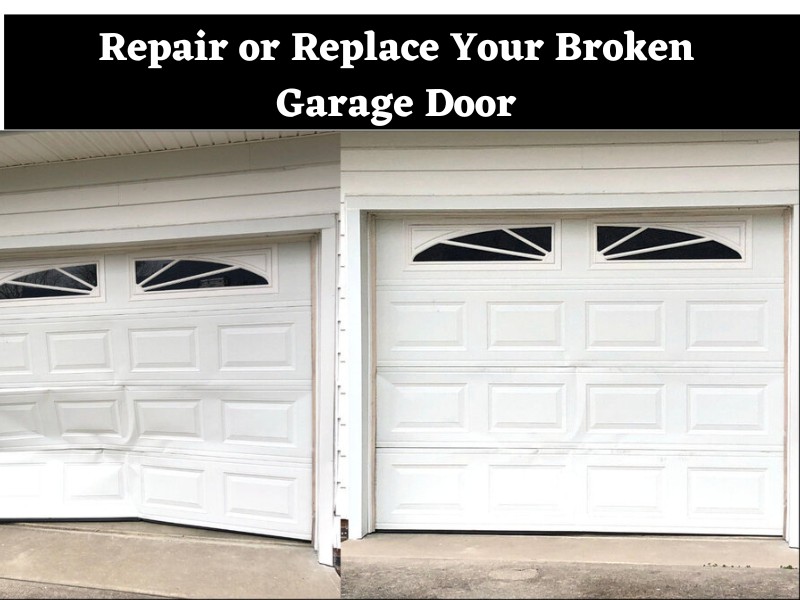Expert Garage Door Repair for Damaged Tracks and More
Wiki Article
Usual Garage Door Problems and Exactly How to Fix Them
Garage doors are essential for both protection and comfort, yet they typically offer a selection of usual issues that can discourage homeowners. Problems such as excessive noise during operation, doors that fail to open or close, misaligned tracks, and malfunctioning remotes can develop without caution. While some concerns might show up simple to solve, others might call for a more nuanced understanding of garage door auto mechanics. Attending to these issues successfully not only improves functionality but also extends the life of the door. One might question what steps are required to deal with these difficulties efficiently.Noisy Garage Door Operation
A loud garage door operation can be a significant resource of nuisance for home owners, typically showing underlying mechanical problems. Such interruptions may originate from different causes, consisting of damaged rollers, loose equipment, or insufficient lubrication. Recognizing the source of the sound is critical for reliable resolution.One typical cause of too much noise is the visibility of rusty or damaged rollers. In time, these components can wear away, bring about grinding or squeaking audios as the door relocations. Normal evaluation and substitute of these rollers can considerably decrease sound levels. Furthermore, loosened screws or screws in the door mechanism can create rattling audios during procedure. Tightening these fasteners ensures a much more secure and quieter movement.
One more adding factor is inadequate lubrication of the door's relocating components. Applying a premium lubricating substance to the tracks, springs, and rollers can considerably lessen friction and noise. House owners need to perform this upkeep occasionally to keep optimal performance.
Finally, the garage door opener may additionally create noise due to its age or mechanical problems. If the sound lingers regardless of addressing other factors, seeking advice from a professional for a thorough evaluation and potential repair work may be required.
Door Won't Open or Shut
Experiencing a garage door that will not open up or close can be incredibly frustrating and typically signals a malfunction within the system. Numerous factors can add to this concern, and recognizing the origin is necessary for efficient resolution.
Next, check the safety sensors situated at the base of the door. These sensors can come to be misaligned or obstructed by particles, preventing the door from running appropriately. Clean the sensing units with a soft towel and ensure they are straightened.
Additionally, the garage door's interior parts ought to be reviewed. Issues such as a damaged springtime, worn-out rollers, or a harmed opener can impede motion. If any kind of components appear to be harmed, it might be advisable to seek advice from a professional for repair work.
Misaligned Tracks
(Superior Quality)Misaligned tracks can severely disrupt the smooth operation of a garage door, leading to functional failures such as uneven movement or complete immobilization. This concern typically emerges as a result of a selection of aspects, including deterioration, unexpected effects, or incorrect installation. When the tracks are misaligned, the rollers can stagnate openly, which not just strains the motor yet additionally postures safety and security dangers.To identify misalignment, aesthetically check the tracks for spaces or uneven spacing. If you see any kind of disparities, it is vital to attend to the issue without delay More hints - garage door service. Begin by loosening up the screws that secure the track to the wall surface, enabling for modifications. Thoroughly touch the track back into its proper setting utilizing a rubber mallet or a similar device, guaranteeing it is straight and level.
When the alignment is dealt with, retighten the screws to secure the track. For a much more permanent option, consider strengthening the tracks with added braces. Regular maintenance, consisting of cleaning the tracks and making sure rollers remain in good problem, can prevent future imbalances. By dealing with misaligned tracks without delay, you can restore the performance of your garage door and boost its longevity.
Broken Springs
Amongst the various elements of a garage door system, busted springs are one of the most usual concerns that can substantially restrain its functionality. Garage door springs are critical for stabilizing the weight of the door, permitting smooth opening and closing. When a spring breaks, it can lead to a door that is challenging to run or, in many cases, entirely unusable.There are two main sorts of springs: torsion springs, which are mounted above the door, and expansion springtimes, found on either side. Signs of a damaged spring include a door that won't open, a visible void in the springtime, or a loud sound throughout operation. Trying to run a garage door with a busted springtime can create further damages to the door or the opener.
Fixing busted springs is not a DIY task; it requires specialized devices and competence due to the high tension involved. It is suggested to speak with a specialist service technician who can safely replace the springtimes and make certain the door is correctly stabilized. Routine upkeep and assessments can help stop springtime failings and extend the lifespan of the garage door system.
Remote Control Issues

The initial step is to inspect the batteries in the remote control. Replace them if they are weak or dead. If the remote still fails to run, examine the garage door opener to make sure that its sensing units are clean and unblocked. Dust, debris, or misalignment might hinder the signal transmission between the remote and the opener.
Disturbance from other digital gadgets can also restrain remote performance. Make certain that close-by gadgets, such as cordless routers or cordless phones, are not causing disturbances. garage door service. If disturbance is thought, attempt relocating these gadgets even more away from the garage door opener
Sometimes, the remote might need to be reprogrammed. Speak with the supplier's standards to reset the push-button control and synchronize it with the garage door opener. If all else fails and the remote continues to malfunction, think about speaking with a specialist technician for an extensive inspection and potential substitute of the remote or opener.
Verdict
(Superior Support)In summary, usual garage door troubles can significantly impact capability and safety and security. Addressing noisy procedure entails lubrication and tightening up equipment, while concerns with opening or closing call for inspection of power resources and sensors. Misaligned tracks can be corrected via adjustment, although broken springs necessitate specialist treatment. Remote control malfunctions generally develop from weak batteries or interference, which can be dealt with with substitute or reprogramming. Positive maintenance and timely repair work can make certain optimal efficiency and long life of garage doors.Report this wiki page